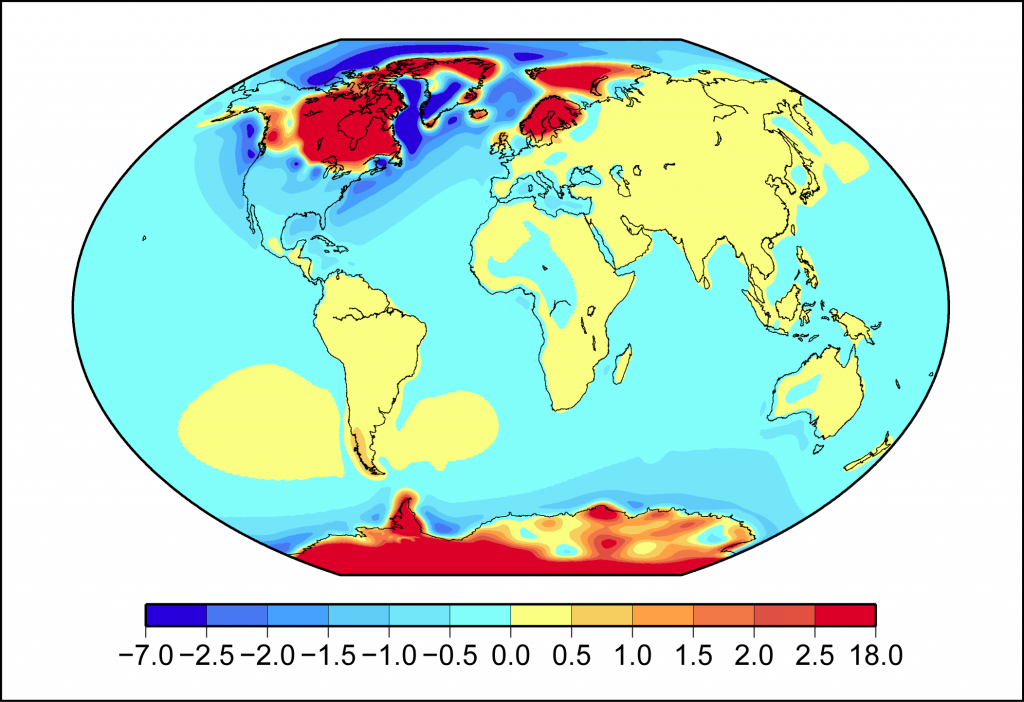So you think Atlantis is some lost, flooded Med Island?
I mean it's not impossible, far from it, I just expected to be outside the Med since the 'Gate of Heracles' was the old name for the Straight of Gibraltar, so everyone expects Atlantis to be west of that.
I think Atlantis was just a story, quite probably inspired by older narratives about a great flood or volcanic cataclism. There is reason to assume that this would most likely be a far more recent event (the most notable candidate being the 'Minioan eruption' of Thera, 1600 BC). However, I'll certainly not rule out the possibility of a much older origin, perhaps dating back to the post-glacial flooding. People remember things, stories can be transmitted down the generations for an amazingly long time.
But all in all, I'm pretty sure that Plato's narrative was more of a fantastical version of it, deliberately placing the event in a "land far away", which is punished by the Gods. It's very much a moral lesson. Think Tower of Babel. That sort of thing. It shows up in most mythologies and ancient (quasi-)histories.
Note also that Plato's narrative
must be called into question if you want to assume that the story has a really ancient origin, since he explicitly has Athens fighting the Atlanteans. Back in the Younger Dryas, the world had not even begun to dream of the birth of the ancient Proto-Indo-Europeans who would one day spawn (among other peoples!) the distant ancestors of the Mycenaeans who would be the forefathers of the Greeks, among whom we'd know the Athenians. In other words: Plato certainly got stuff wrong, even if he was being as genuine as he could.
(On the other hand, the reference to the lands of Greece being more 'fat' -- i.e. there being more land, and less water between th now-islands of Greece -- is the strongest support we have for a potential Post-Glacial origin of the whole story. But then again... that's one line, which we could be mis-reading...)
Regarding the Gates of Herakles specifically: besides a lot of evidence that Plato was just making up a myth-typical "far-off land", it should be noted that in Greek stories "beyond the Gates of Herakles" is
very often the location of mythical lands. That's where you find the mystical Hesperides, where the immortals dwell and the nymphs sing below the stars...
I don't understand this map at all, but was wondering if you did yoir calculations with 1300, or 13000. Because you typed 1300 here, but 13000 years is the more accurate figure.
The point of the map is that isostatic rebound is measured in millimeters per year. And that the Azores are not even in a region where we're on the high end of the scale. The upshot is that we're talking about 'mere'
meters of difference, across millennia. It doesn't explain away that the Azores plateau is
kilometers below the surface.
I'm certain that the Azores were bigger (if still small) islands when sea levels were 200 meters lower. I'm willing to grant that volcanism and landslides may well have carved off some of their size (while the latter deposited surface vegetation to the bottom of the ocean as well, thus explaining
that), meaning the islands were possibly even a bit bigger than mere sea-levels can indicate. And then there's some additional meters of isostatic rebound.
All in all, that changes little. It still gives us "the Azores, but the islands were bigger back then". Which I've never denied. What I wanted to refute was the notion of an Iceland-sized land-mass there, because... that didn't exist. And pretending that it did is pseudoscience. (If someone can show me a convincing meachinism by which such a plateau sinks by four to eight kilometers in the geologically ultra-brief span of a few thousand years, I'm willing to change my mind, to be clear! But to my knowledge, no such mechanism is known to exist.)
However, when it comes to Atlantis, I'd advise people to look at Jimmy Corsetti from bright insight about it. I think he might be on to something spectacular here.
It's a well-made video; I've seen it and enjoyed it. It's certainly a better case than the Azores. It does run into the same issue with isostatic rebound, though. The Richat structure is way too high to have been a port city, so in a reverse of the Azores hypothesis, the 'explanation' now becomes that isostatic rebound caused the region to
rise by a a significant amount over the past few thousand years.
And the bottom line is: there's no evidence for that at
all. They use arguments like "yeah, but we found skeletons of sea life there in the Sahara". Which is true, but those remains are
way older. You can find that stuff in the middle of North America, too. Those are from when the Western Interior Seaway was there. You know... up until about 66 million years ago.
That's a credible geological time-frame for this kind of major change. But 12.000 years or so is not.
Granted, if you're going to write an Atlantis narrative, tying it to the last Green Sahara period and to stuff like the giant Tamanrasset River that once emptied into the Atlantic is a great premise. It's more original, and ultimately far more plausible. It's still all speculative, but if someone made a good case for that -- without relying
too much on "and then impossible stuff just happened, trust me bro" -- I'd happily read his book.

